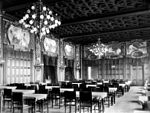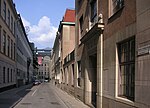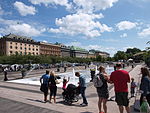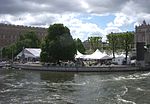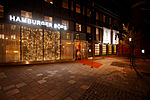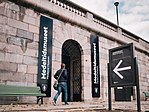Café Opera
1980 establishments in SwedenCoffeehouses and cafés in SwedenNightclubs in StockholmRestaurants in StockholmSwedish building and structure stubs

Café Opera is a café and nightclub in Stockholm, Sweden in the Royal Swedish Opera building and part of the Opera Cellar (Operakällaren). It serves as a bistro, brasserie and tearoom during the day but becomes one of Sweden's most famous and busiest nightclubs after 10pm. It opened in 1980. On the ceiling are paintings by Vicke Andrén. The club is also a former football club named FC Café Opera, founded in 1991 and which played in the Swedish Second League until 2005 when it merged with Väsby IK to form FC Väsby United.
Excerpt from the Wikipedia article Café Opera (License: CC BY-SA 3.0, Authors, Images).Café Opera
Gustav Adolfs Torg, Stockholm Norrmalm (Norrmalms stadsdelsområde)
Geographical coordinates (GPS) Address Nearby Places Show on map
Geographical coordinates (GPS)
| Latitude | Longitude |
|---|---|
| N 59.33 ° | E 18.070833333333 ° |
Address
Operahuset
Gustav Adolfs Torg
103 21 Stockholm, Norrmalm (Norrmalms stadsdelsområde)
Sweden
Open on Google Maps

